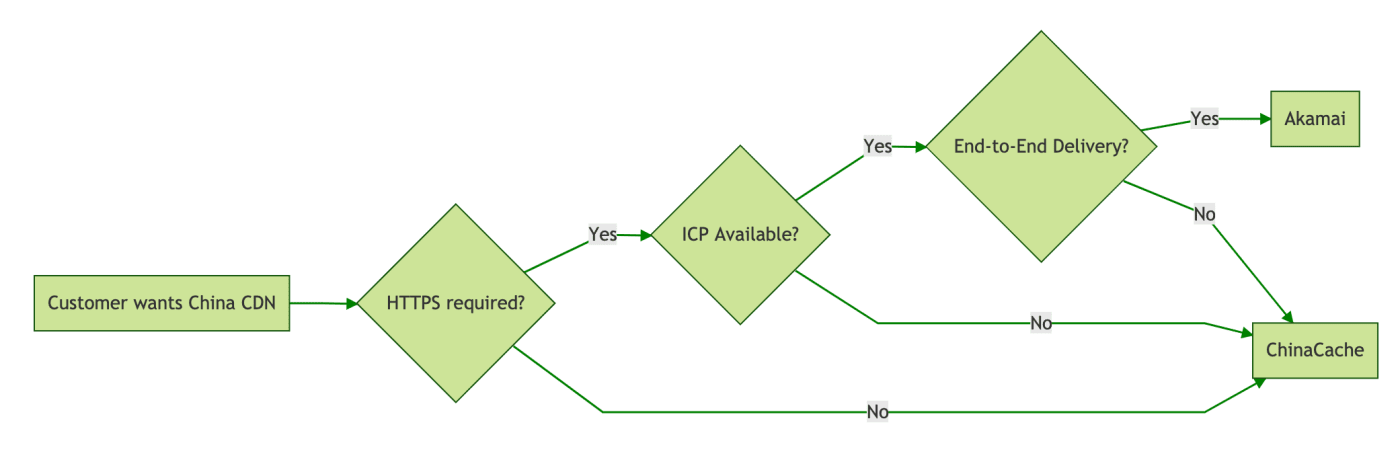In February 2018, Cloudinary announced its support of content delivery through CDNs [content delivery networks] in China. With this offering, we announced the ability to support features like automatic format f_auto, DPR selection dpr_auto and authentication (using token and cookies). This post elaborates on the CDN options available to you and the related setup requirements.
Delivery of China-Destined Content Through a China CDN
As my colleague Maor Gariv explained, fast delivery of online content requires that CDN edge servers be close to viewers. For audiences in China, delivery must be through a local CDN. At the outset, you might need to procure an Internet Content Provider (ICP) license. Whether that requirement pertains to you is a legal question so consult with your legal team. Typically, an ICP license is required only if your business operates out of Mainland China and you want to host or cache content on servers there. For more details, see these two references:
- An article on ICP licenses by Akamai, a China CDN
- A post entitled Chinese ICP Licensing: What, Why and How to Get Hosted in China by Kendra Schaefer
Cloudinary and Its China CDNs
Cloudinary has partnered with China CDNs Akamai and ChinaCache to help our customers with content delivery in China. Akamai requires a valid ICP license. Also, even though that CDN supports HTTP traffic through its secure network, your traffic must be HTTPS based. On the other hand, ChinaCache offers a partnership whereby customers can leverage one of its subdomains for delivering status resources. Therefore, you can work with ChinaCache without an ICP license or if you’d like to deliver either of the following:
- Traffic on a domain with a valid ICP license
- HTTP traffic The simple decision tree below helps you decide which China CDN to opt for: Akamai or ChinaCache.

- With a valid ICP, you can work with ChinaCache even though the setup involves a bit more paperwork. See the next section for details.
- Both Akamai and ChinaCache require that you go through a validation process even with a valid ICP license, lengthening the integration time.
Differences Between Akamai and ChinaCache
Akamai and ChinaCache differ in two aspects: cache invalidation and contractual details.
Cache Invalidation
Integrated with Cloudinary as one of its core CDNs, Akamai is available as a network choice for delivering media. If you delete or modify media assets, Cloudinary’s automated workflow seamlessly clears Akamai’s CDN cache. ChinaCache’s integration with Cloudinary yields a custom CDN for delivering your Cloudinary-hosted content. That means that, in case of asset updates or deletions, Cloudinary cannot automatically clear ChinaCache’s cache and that you must build a process to ensure that the changes are in place on ChinaCache. Cloudinary’s webhook notifications could help you set up the workflow.
Contract Requirements
Cloudinary can easily add domains with Akamai. As a customer, you only need to fulfill the formalities for account modifications or upgrades with no need for a separate contract to adopt Akamai as your China CDN. However, to enable Cloudinary to integrate with ChinaCache for content delivery, you must enter into a contract agreement with that vendor.
Time to Market
The biggest unknown for Cloudinary’s integration with a China CDN is how long it takes to obtain an ICP license. If you already have such a license and have no vendor preference, integration takes about a week, which is the time required for us to submit the license application to the CDN and for it to validate and whitelist the domain for delivery. If you don’t need an ICP license, you must first step through the procurement process with ChinaCache. This will involve some time to work on a new contract with ChinaCache. Once that’s complete, the integration at Cloudinary takes about five workdays, after which you must build the workflow for cache invalidation, which could take a few days to weeks. Overall, assume that a robust implementation of China delivery would take 15 to 30 calendar days. Again, that estimate does not include the time required for procuring an ICP license.
Conclusion
Now you have an idea of the two CDN options for delivering content in China through Cloudinary, the process of implementation, and the related schedules. Feel free to contact us with any questions and sign up for free. Our best wishes for a smooth sail in building a blazingly fast experience for your audience in China!





